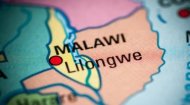|
Lilongwe Airport |
Lilongwe Airport |
Lilongwe Airport | Lilongwe Airport |
Explore all about Malawi in a series of profile articles, pictures, videos and images of the country.
More >
 |

|
While not boasting the sprawling retail landscapes of larger airports, the facilities are sufficient to meet the needs of travellers. A modest duty-free shop offers a selection of spirits, tobacco, perfumes, and Malawian souvenirs including crafted wood, flowers, tea towels, handbags and clothing made from bright Malawian fabric (chitenge). For refreshments, there are a few cafes and a restaurant providing snacks, light meals, and beverages, offering a space to relax before a flight. The airport is generally well thought of by travellers who use it, being described as "clean and comfortable and staffed by invariably friendly people." For those seeking a more premium experience, the airport features executive lounges, such as the one operated by Malawi Airlines, offering a quiet and comfortable environment with complimentary refreshments and Wi-Fi. Practical amenities are also available throughout the terminal, including currency exchange bureaus for converting foreign currency to the Malawian Kwacha, several ATMs, and car rental desks operated by international brands like Avis and Europcar, as well as local providers. These facilities ensure that arriving passengers can seamlessly transition from their flight to the next stage of their Malawian adventure. The airport's single runway is capable of handling a range of aircraft, from the smaller turboprops used for domestic routes to the Boeing 737s and Airbus A320, commonly used by international carriers on their regional flights. In terms of passenger numbers, Lilongwe Kamuzu International Airport handles a volume that is proportionate to Malawi's size and its developing tourism sector. Prior to the global travel disruptions of recent years, the airport was processing several hundred thousand passengers annually. While these figures may seem modest compared to a major continental hub, they represent a lifeline for the nation's economy. Every passenger, whether a tourist arriving to explore Lake Malawi National Park, a business executive attending meetings in the capital, or a member of the Malawian diaspora returning home, contributes to the country's economic vitality. The numbers are a direct reflection of tourism trends, international business confidence, and the strength of regional trade. As Malawi continues to market itself as a unique and underexplored tourist destination, these numbers are poised for steady growth. Looking to the future, Lilongwe Kamuzu International Airport remains a cornerstone of Malawi’s national development strategy. There is ongoing recognition of the need for periodic upgrades and modernisation to enhance passenger experience, improve operational efficiency, and attract new airlines. Discussions and plans have often revolved around rehabilitating the runway, upgrading navigational aids, and renovating the terminal building to meet evolving international standards. Such improvements are vital not only for boosting tourism but also for strengthening the airport's role as a cargo hub, facilitating the import of essential goods and the export of Malawian products like tea, coffee, and tobacco. |







